The Helpful Guide You Need for Drought-Tolerant Grasses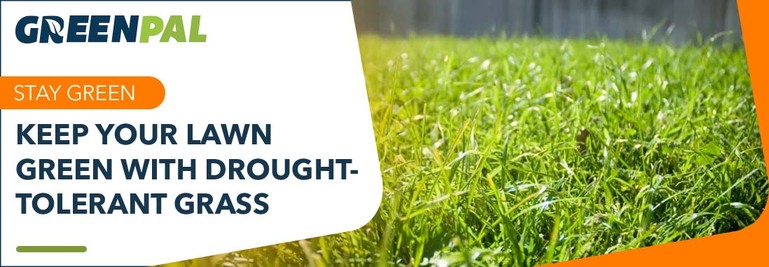
How do some lawns stay healthy through a drought? Those yards boast some of the best drought-tolerant grasses — they make all the difference.
If you live in a dryer climate, or the summers have been dominating your lawn the past few seasons, it might be worth taking a look at drought-tolerant grasses.
Besides being able to withstand dry spells better, these grasses provide some of the following benefits:
Conserving water and saving on water bills
Less maintenance, saving time and energy
Providing a habitat for native wildlife
Key Takeaways
Benefits |
Save water, low maintenance, supports wildlife. |
Warm-Season Grasses |
Bermuda, Zoysia, St. Augustine, Centipedegrass. |
Cool-Season Grasses |
Tall Fescue, Fine Fescue, Kentucky Bluegrass. |
Choosing Grass |
Match to USDA zone, soil conditions, sunlight, and foot traffic. |
Climate and Soil |
Warm-season for hot/mild climates, cool-season for cool/cold climates; test soil for best results. |
Types of Drought-Tolerant Grass
Select a type of drought-tolerant grass based on climate and soil conditions to keep your lawn green and growing in dry conditions.Different types thrive in climates that consistently face drought. Let's look at some of these grasses that thrive even when water is scarce.
Warm-season grasses
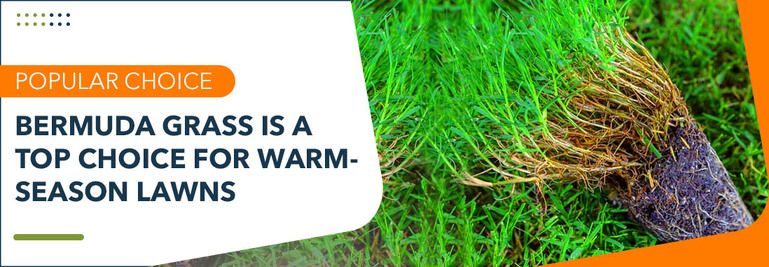
Bermuda grass
One popular choice for warm-season lawns is Bermuda grass. Golf courses love it. Athletic fields thrive on it. It needs full-time sun.
When droughts come, Bermuda grass keeps pressing on it. Plus, it handles traffic well. It grows best in many areas of the southern US. (Some varieties of Bermuda grass do well in sub-zero temperatures).
Bermuda grass has extensive roots that penetrate deep into the soil, so they can use water deep underground and recover more quickly from things like damage and repeated foot traffic.
It does need to be mowed regularly during its growing season and can benefit from an annual dose of fertilizer. Still, it's low-maintenance.
Zoysia Grass
Zoysia grass is drought-tolerant with a dense growth pattern, making it an excellent warm-season choice. This warm-season grass is native to China, Japan, and other Southeast Asia countries.
Its dense, closely woven growth impedes competition from weeds, plus its high shade tolerance is helpful for some. Although it handles shade better than Bermuda, Zoysia is also higher maintenance — it needs more care not to accumulate thatch.
Keep in mind that different varieties of Zoysia have varying levels of drought tolerance and maintenance needs. The Texas Cooperative Extension noted the following about different varieties:
Zoysia japonica varieties such as Crowne and JaMur Palisade have high drought tolerance.
Varieties like Meyer have poor drought tolerance. Most Zoysia matrella varieties, such as Cavalier and Zeon, have poor to medium drought tolerance.
St. Augustine Grass
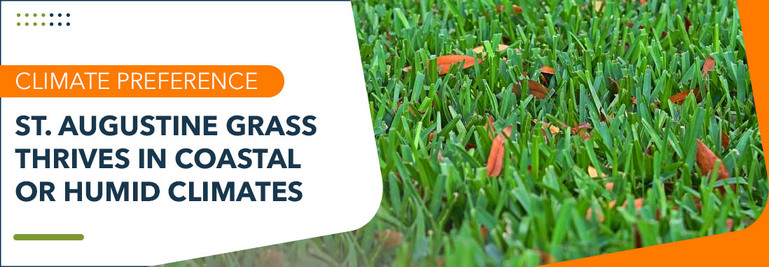
St Augustine grass likes coastal or humid climates best and is used in USDA hardiness zones 7 through 12. This variety of grass is tolerant to salt and shade and is suitable for coastal lawns. It has broad, flat blades that form a very dense, attractive yard. St. Augustine is also an excellent choice for lawns that may not receive a lot of rain through dry months but are also well-shaded.
Its shade and drought tolerance make it a top choice for many living in parts of Texas and east along the Gulf Coast to Florida.
This grass needs regular watering for the first couple of years but becomes drought-tolerant once established. It also requires an occasional application of fertilizer and mowing.
Centipedegrass
Centipedegrass is a warm-season grass known for its low maintenance requirements and moderate drought tolerance. It thrives in USDA hardiness zones 7 through 10, making it well-suited for the southeastern United States.
Centipedegrass is often called "lazy man's grass" due to its minimal care needs. It has a slow growth rate, which reduces mowing frequency, and maintains a reasonable amount of color in drought conditions. Its ability to thrive in poor soils makes it a versatile choice for many homeowners.
Cool-Season Grasses
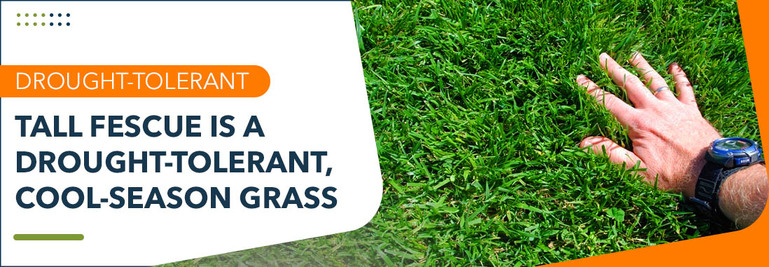
Tall Fescue
Tall fescue is a drought-tolerant, cool-season, perennial grass that thrives in hardiness zones 3 through 8 and remains green year-round in warmer climates.
It has a deep root system that gives it good drought tolerance and high traffic and disease resistance, making it a good choice for lawns and fields. Homeowners living in transitional climates love Tall fescue for its adaptability. Hot? No worries. Harsh winter? It'll hang in there.
Fine Fescue
Fine fescue has a strong tolerance for both shade and drought. This grass has thin blades and a dense appearance that feels soft on the feet. It’s low-maintenance – it rarely has to be mowed and requires little to no fertilization.
Kentucky Bluegrass
Kentucky bluegrass is a fine-textured cool-season lawn grass. It does tend to lay dormant during extreme drought. Even though it's not as drought-tolerant as fescue, its deep, well-spread root system recovers quickly.
How to Select the Right Drought-Tolerant Grass
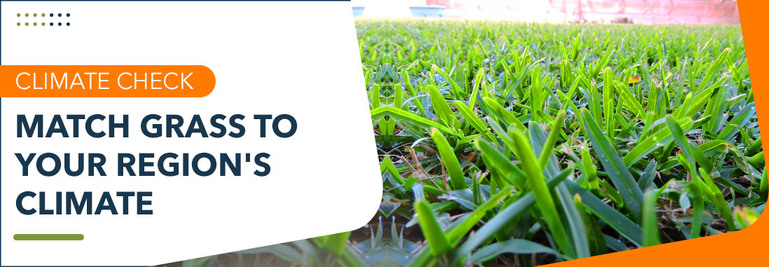
It's important to understand your region's climate before choosing a drought-tolerant grass. The USDA's Plant Hardiness Zone map helps determine which grass will thrive in your area. Each USDA zone represents a specific temperature based on the area's average annual minimum temperature — divided into 10-degree Fahrenheit increments.
Warm-season grasses thrive in areas featuring hot summers and mild winters. Examples include:
Bermuda grass
Zoysiagrass
St Augustine
Buffalograss
Centipedegrass
On the other hand, cool-season grasses grow best in areas with cooler summers and colder winters. They tolerate cold and persist through snow. You can ensure that the grass in your yard will remain healthy by choosing the grass type that matches the hardiness zone for your area and with proper care.
Soil Conditions
Your grass needs the right soil to thrive. Understanding your soil and its condition will help you choose the best drought-tolerant grass for your lawn. A soil test before grass seeding indicates your soil's pH, nutrient levels, and texture like this: Here's how to treat different soils:
Soil Type: The majority of grasses develop best when soil drains well. For instance, Bermuda grass works well in sandy soils, while Fine fescues are a fine (see what I did there?) choice for clay or loam soils — though they grow well in many soils.
Soil Nutrients: You want to ensure your soil has well-balanced nutrients. A soil test can help determine whether a new bed needs fertilizer or organic matter to boost fertility and soil structure.
Sunlight and Shade Tolerance

Homeowners must also select drought-tolerant grass based on how much sunlight their lawn receives. Many warm-season grasses, like Bermuda and Buffalograss, need at least 6 to 8 hours of direct sunlight daily.
Zoysia grass and St Augustine do better with shade. They'll fare well with only 3 to 6 hours of sun daily.
Foot-Traffic Tolerance
Consider how much wear you'll give your lawn. Some grasses hold up better to heavy use. Bermuda grass and Tall fescue can be utilized a good deal. One of the main benefits of these grasses is their durability and tendency to grow back quickly.
Quick Summary
Aspect |
Details |
Benefits |
Conserves water, saves on bills, low maintenance, supports native wildlife. |
Warm-Season Grasses |
Bermuda, Zoysia, St. Augustine, Centipedegrass. |
Cool-Season Grasses |
Tall Fescue, Fine Fescue, Kentucky Bluegrass. |
Selection Factors |
Climate (USDA zones), soil type, sunlight/shade, foot-traffic tolerance. |
Soil Conditions |
Test soil pH, nutrient levels, and texture for best results. |
Sunlight Needs |
Warm-season: 6-8 hours sun. Cool-season: tolerates more shade. |
Drought-tolerant grasses help keep a lawn looking sharp even during a dry spell. Besides conserving water and saving on water bills, many of these grasses require less maintenance — saving homeowners time and energy. They also provide a habitat for native wildlife.
To choose the right drought-tolerant grass, a homeowner needs to understand the USDA hardiness zones and the types of grasses that will thrive in their climate and soil. 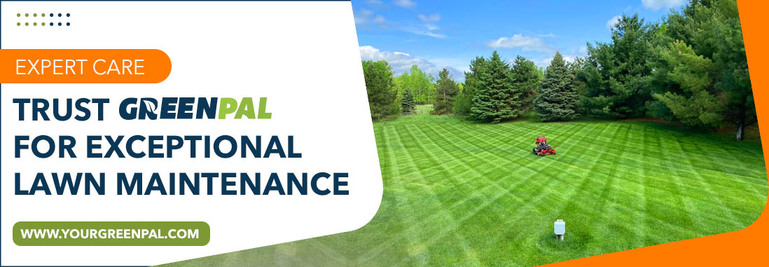





 Share
Share











